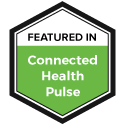4 minute read:
Originally published on April 18,2018, in Accounting Today.
In most organizations, the task of ensuring compliance with the Affordable Care Act lies with the Human Resources team. However, that perspective may need to change with the IRS issuing ACA penalty notices that can make a dent in an organization’s bottom line.
It’s time to recognize that the ACA and its employer mandate may have considerable tax and financial implications. That makes it as much of a problem for chief financial officers and their CPAs as the HR department.
Organizations with 50 or more full-time or full-time equivalent employees must comply with the ACA’s employer mandate. The employer mandate requires these Applicable Large Employers (or ALEs) to either offer minimum essential coverage to at least 95 percent of their full-time employees and their dependents that is “affordable” and provides “minimum value.” Employees who work a minimum of 30 hours per week are considered to be “full time” under the ACA. Annual reporting of health care benefits offered by ALEs must be furnished to full-time employees and be reported to the IRS using Form 1095-C.
Failing to do this, ALEs have the option to make an employer shared responsibility payment to the IRS. As we are now finding out, these ESRPs can be in the tens of millions of dollars for some ALEs.
Starting in November, the IRS began issuing Letter 226J notices to ALEs the IRS asserts failed to comply with the ACA in their information filings to the IRS for the 2015 tax year. The issuance of these notices is continuing. The IRS is expected to start addressing ACA information filings for the 2016 tax year before the year ends.
CFOs at ALEs should check to understand the status of their organizations’ ACA compliance. Based on this review, they may want to take into consideration the requirements of U.S. GAAP – ASC 450 Contingencies (formerly FAS 5). If ESRPs are a possibility, they may be considered probable and reasonably estimable loss contingencies that should be recognized and disclosed in financial statements. If not, ALEs must demonstrate that they have internal controls in place to mitigate any such potential excise tax liability from receiving an ESRP.
If ESRPs are imposed, these IRS penalties may need to be disclosed in the MD&A section in SEC filings. Employer mandate penalties must be disclosed on a partnership’s Schedule M-1.
These ESRP penalties may result in effective tax rate increase and are not tax deductible.
Here are some steps you can take to help prepare for the possible implications on your organization’s financial statements.
Corporate organization: Analyze corporate structure to determine which entities are part of a control group in determining ALE status.
Data consolidation and systems controls: Examine systems and data consolidation process to identify any gaps that may impact ability to generate accurate Section 6055 and 6056 reporting.
Workforce analytics: Provide comprehensive analysis of potentially health care eligible employees (i.e., part-time, seasonal, independent contractors, etc.) and company readiness and capability to measure variable hour workers. This should be done on a monthly basis.
Benefits offering analysis: Verify minimum value of offered healthcare plans. According to Healthcare.gov, a health plan meets the minimum value standard if its designed to pay at least 60 percent of the total cost of medical services for a standard population and its benefits include substantial coverage of physician and inpatient hospital services.
Affordability analysis: Determine affordability that accounts for HRAs, opt-out arrangements, flex credits and other programs that impact the affordability of health care offerings as determined by the ACA. Employer mandate guidelines state that coverage is affordable when an employee has to pay no more than 9.5 percent of their household income (9.56 percent for 2018 as annually adjusted.)
IRC Sections 6055 and 6056 reporting: Assess the current processes and systems to be used to timely prepare, distribute and file ACA information returns.
Potential excise tax liabilities: Estimate Section 4980H(a) and (b) excise tax liabilities. Penalties for Section 4980H include two types of ESRPs for ALEs. The “A” penalty for 2017 is $2,260, multiplied by the total number of full-time employees. The “B” penalty applied to ALEs who for the 2017 tax year is $3,390, multiplied by the number of full-time employees who receive a tax subsidy for purchasing coverage through the government healthcare marketplace.
Employee notifications: Assess and implement communication and documentation controls for ACA-related employee notifications that you may receive from the Healthcare Marketplace or the IRS. Implement Healthcare Marketplace Exchange appeal processes to refute any notices that claim your organization is not in compliance with ACA requirements.
The ACA employer mandate has both financial and tax implications. To prevent your organization from having issues with auditors, plan ahead so ESRPs will not have an adverse impact on your organization’s operations and financial statements.
If it’s a bit daunting, employers should consider seeking guidance from a CPA or a third-party vendor who is expert in both regulatory compliance and tax regulations. They should be sure that whoever they use will stand with their organization if it receives an ESRP in a Letter 226J or is audited by the IRS. It may be worth the cost for the peace of mind it will provide.
You may be reading this and thinking that this doesn’t apply to your organization because you haven’t received a Letter 226J from the IRS. However, it may be coming.
The IRS has developed an automated ACA Compliance Validation System and associated data tools to search its databases for information that will identify organizations that have not complied with the ACA. If you have not filed or provided inconsistent or incorrect information, the IRS’s automated system will identify you and you will be assessed a penalty. Is it worth the risk not to be prepared?
The ACA Times Editor’s Note:
To learn more about eliminating or reducing ACA penalty assessments issued by the IRS, click here.
To find a helpful infographic on how to respond to Letter 226J, click here.
To find helpful information on ACA compliance, go to the ACA Resources Hub by clicking here.
To see the article as it appeared in Accounting Today, click here.






